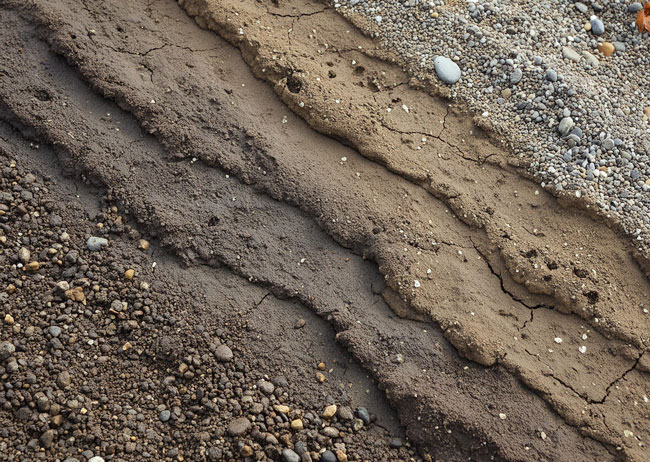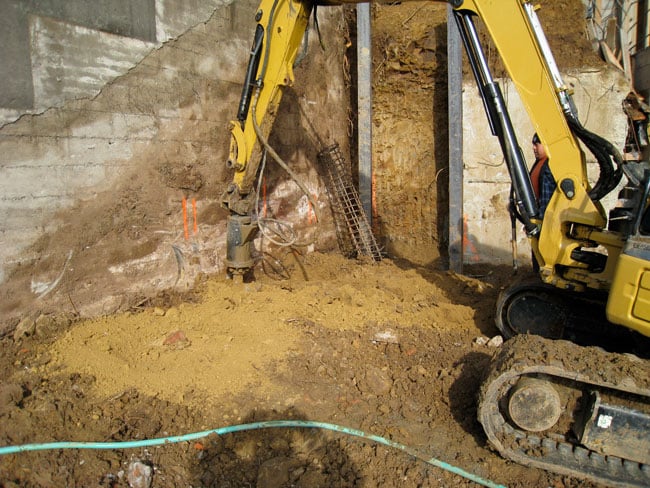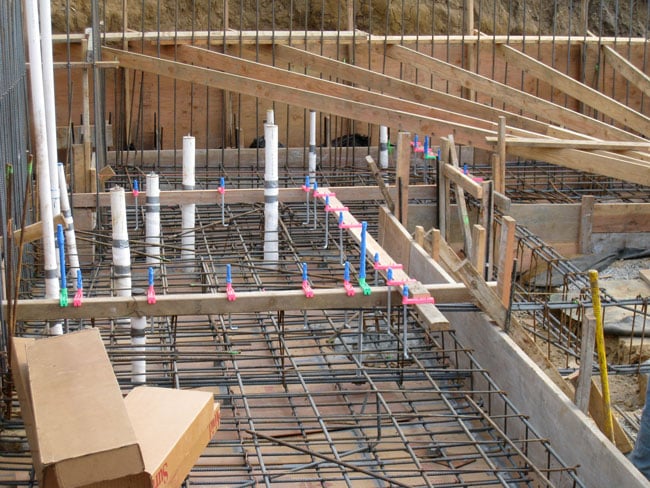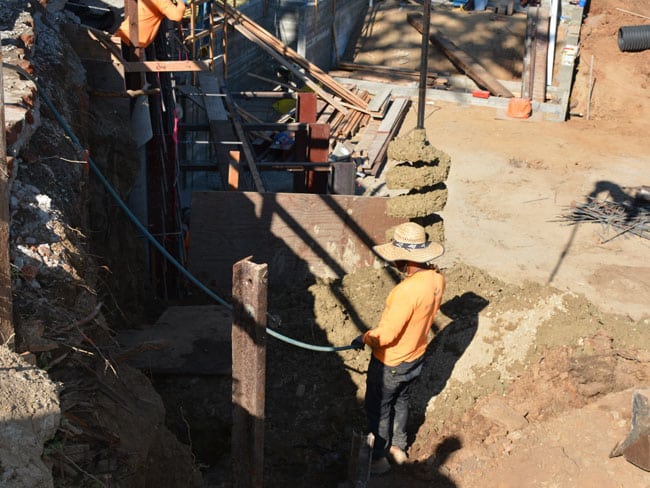Fixes for Foundation Settlements
The first question that comes to mind is “why has the foundation settled”? There are many conditions that could cause foundations to settle. Almost always, the soil condition is the cause. If the soil is not strong enough (competent soil), it is not able to support the foundation especially after the building structure is built on that foundation. The causes could range from poor quality of the soil to lack of proper compaction of the soil prior to construction, or gradual erosion of the soil due to underground water movement, to gradual shifting or “creep” of the soil, mostly on hillsides due to the effect of gravity.
There is also the composition of the soil that could result in the settlement and the cracking of the foundation. An example is “Expansive Soil”. The chemical characteristics of expansive soil is such that once the soil gets exposed to water it expands and as the soil dries it contracts. Any foundation that is built on this type of soil is at the mercy of the periodic expansion / contraction and eventually cracks and loses its form.
As one would conclude, the repair depends on what soil characteristic has caused the settlement. Stabilizing a foundation built on sand is different than on expansive soil, or shifting soil or soil with inadequate compaction. The approach could range from stabilizing the soil to ignoring the soil condition and underpinning the foundation with new concrete piers or caissons that are drilled down to hard material that can bear the load of the building.
The first step in that assessment is to examine the soil. Although after 40+ years of building foundations on most available soil conditions in Northern California we are able to visually examine a site and eliminate a number of potential causes for settlement, we defer to soil engineers to obtain soil samples, examine the soil in the laboratory and issue a soils report including an engineered recommendation for repair.
As a general outline of the methods used to stabilize foundations on most soil conditions, we can discuss the range of approaches that are recommended for different soil conditions.
Beach Sand
In the San Francisco area, many houses have been built on beach sand. The most usual approach to stabilizing foundations built on beach sand is the use of Chemical Grouting. This process involves the injection of a stabilizing compound such as mixture of a very fine cement with water into the sand to strengthen the sand in to convert the sand into a form of mortar. This operation that is designed and injected by specialty contractors can start from a prescribed depth in the ground solidifying the sand under the foundation. If done properly, this operation should be sufficient to stabilize the sand and the foundation.
Expansive soil
As described, expansive soil has a high content of clay minerals. Clay has a tendency to swell in the presence of water and shrink as the soil dries. Typically, when we build a new foundation on expansive soil, we remove a layer of the soil under the foundation and place Void Forms on the ground below the foundation to separate the bottom of the foundation from the expansive soil. This type of construction always requires drilled piers under the foundation to support the load of the building as the void forms are made of cardboard and will eventually decay creating a void under the foundation. Depending on the composition of the clay soil, at times, engineers specify placement of gravel under the foundation rather than void forms. This method may not need drilled piers under the foundation and will be less expensive to build.
Creep
Often when building new foundation or repairing existing foundations on soil that is shifting, or not properly compacted, concrete drilled piers are constructed under the foundations to transfer the load to lower levels of the soil where the ground is rocky and strong enough to hold the building stable even though the soil immediately under the foundation is not “competent”. Helical Piles and Push Piers are other methods that are used to replace concrete drilled piers as underpinning mechanisms. These are heavy duty steel pipes that are driven or screwed into the ground to prescribed depth and connected to the foundation to support the load of the building.
Please feel free to contact SteelCore Builders, Inc for any additional information at: (415) 331-0525 or a info@steelcorebuilders.com.




